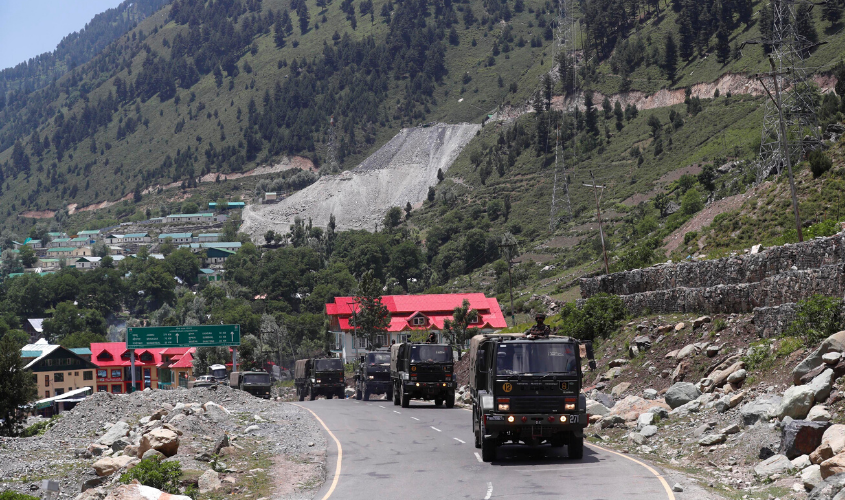New Delhi: South Block-based government officials, who are closely monitoring the developments with regards to the India-China confrontation at the Line of Actual Control (LAC), have stated that one of the primary reasons or trigger behind’s China’s misadventure is aimed at stopping India from becoming a part of the US-led Indo-Pacific Deterrence Initiative (PDI).
On 11 June, the United States Senate had passed its annual National Defense Authorization Act (NDAA), which among others, provided for $6.9 billion (for 2021-2022) to the Pacific Deterrence Initiative (PDI).
US military strategists have designed the PDI on the same lines as the European Deterrence Initiative or EDI. The PDI is mandated to bring sustained investment in the Indo-pacific region with the focus to build military capabilities, especially infrastructure and logistics, to deter China from executing its expansionist tendencies in the Pacific region. The EDI was formed in 2014 after Russia had annexed Crimea from Ukraine. The PDI has been formed to stop another Crimea being repeated in the Indo-Pacific region. The PDI is expected to spend billions of dollars by mid-2021 to install air and missile systems and other military installations in partner countries, which includes India, Japan, Australia and Taiwan.
It will also establish an F-35A operating location in the Indo-Pacific region (in one of the partner countries) and allocate “sufficient resources for the protection of air bases that might be under attack from current or emerging cruise missiles and advanced hypersonic missiles, specifically from China”, a summary of the Act reads. The Act has also called for “Enhancing the design and posture of the Joint Force in the Indo-Pacific by transitioning from large, centralized, and unhardened infrastructure to smaller, dispersed, resilient, and adaptive basing; increasing the number of capabilities of expeditionary airfields and ports; enhancing prepositioning of forward stocks of fuel, munitions, equipment, and material; and improving distributed logistics and maintenance capabilities in the region to ensure the sustainment of logistics under persistent multi-domain attack; and strengthen alliances and partnerships to increase capabilities, improve interoperability and information sharing, and support information operations capabilities with a focus on countering malign influence”.
“The US has shown how serious it is when it comes to tackling Chinese expansionism by passing the bill to form PDI. The PDI cannot function on its full capacity without India being a member of it and this is something that China knows. What we are witnessing at the Ladakh border is a serious attempt to deter India from becoming a part of the PDI. There are other minor triggers, but PDI is the major one,” a senior government official, who is not authorised to speak to the media, told The Sunday Guardian. According to him, with the substantial funding that PDI has been allotted, it was clear that the confrontation between the PDI partner countries and China is going to increase in the coming months. The fact that the PDI has worried policymakers in China was evident from an article titled “Indo-Pacific Strategy now shows its true colour”, that was published on 17 June on “chinamil.com” which is the only official English language news website of the People’s Liberation Army (PLA).
The article written by Dr Qian Feng, Director of the Research Department at the National Strategy Institute, Tsinghua University, stated that the PDI was a move by the US to curb China with its military strength under the pretext of cooperation. The article goes on to say that one of “key countries” of this initiative, India, is seen as most vital by Washington for the success of the “Indo-Pacific strategy” and the containment of China. “New Delhi’s China policy has indeed been consistently passive, yet its ‘strategic independence’ principle goes counter to ‘America first’, and the country has openly stated several times that ‘Indo-Pacific’ is an open, non-corporate geographical concept. This means maintaining the current balance among major countries continues to be the best option for India to protect its own interests,” Feng wrote. The article is being seen as a soft warning by China to India not to join the PDI.
An article on the same lines was carried by China Central Television (CGTN), the state-controlled broadcaster which is referred to as a mouthpiece of the Chinese government. The article titled “Clearly aimed at China! U.S. sets up Pacific Deterrence Initiative”, coincidentally was also published on 17 June.
However, with the current situation at Galwan and Chinese policymakers refusing to control Pakistan’s terrorist tendencies, despite multiple hard evidence-based prodding by Delhi to Beijing, a very strong section among those whose voices matter while deciding such issues in New Delhi, wants India to take a “practical” decision when it comes to PDI.
“The PDI has been formed in a way to win as many

